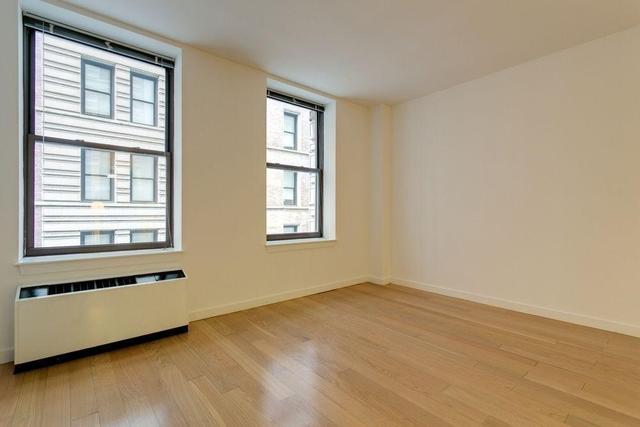
New York City Rats Issue – Everything You need to Know
By: ROS Team
New York City is known as the “Big Apple,” but unfortunately, it’s also known for having a big problem with rats.
These rodents are a common sight in many areas of the city, and their populations have been on the rise in recent years. This is not just an aesthetic or cultural problem but a serious public health issue that can lead to the spread of disease and cause property damage.
Rats thrive wherever they have access to water, food, and shelter. Rats pose a health threat to people because their waste and saliva can contaminate food and spread disease.
1- Background on Rats in NYC
2- Highest Rat Populations In Neighborhoods
3- Causes of Rat Infestations in NYC
4- Consequences of Rat Infestations in NYC
5- Solutions to Rat Infestations in NYC
6- Health Department Intervention
7- Tips for Controlling Rats
8- Finding a Rat-Free Apartment in NYC
9- Frequently Asked Questions
New York City has seen a drastic increase in its rat population, landing at #3 on the list of rattiest cities in America (Chicago and Los Angeles hold down the #1 and #2 spots).
As the problem of rat infestations continues to grow in the city, it is important to identify which neighborhoods are most affected.
Thanks to all the leftover food that’s tossed from the city’s nearly 25,000 restaurants, rats have plenty of resources at their disposal to survive and multiply. However, by taking adequate measures, New Yorkers can position the city to win the war against the growing rat population.
This information can help city officials and residents take action to reduce the rat populations and improve the quality of life for those living in these areas. In this blog post, we will explore the neighborhoods in New York City that are suffering the most from rat infestations.
Health Hazard
Rats carry pathogens through their waste and saliva that can cause fever, vomiting, and diarrhea. Some of the diseases they carry are significantly dangerous for children.

Background on Rats in New York City
New York City has had a long-standing problem with rats. In fact, the city is home to two species of rats: the Norway rat (also known as the brown rat) and the roof rat (also known as the black rat).
The Norway rat is the more common of the two and can grow up to 18 inches in length, including its tail. It is brown or gray in color and has a blunt nose and small ears.
The roof rat, on the other hand, is smaller, measuring about 6 to 8 inches in length, and has a pointed nose and large ears.
Rats are known for their adaptability and are able to survive in a wide range of environments, making them well-suited for life in the city.
They can be found in parks, alleys, sewers, subways, and even in people’s homes. They are attracted to areas with easy access to food and water, making garbage cans and overflowing dumpsters a prime location for rat populations.
In recent years, rat infestations in New York City have become more prevalent. In 2017, the city’s 311 hotlines received over 17,000 complaints related to rats, a 10% increase from the previous year.

This problem has led to public health concerns, as rats are known to carry and transmit diseases such as leptospirosis and hantavirus. The increasing rat populations in the city have also caused property damage and threatened public safety.
The issue of rats infestations in NYC is a complex problem that requires a multifaceted solution. By understanding the neighborhoods that are most affected by these infestations and the causes behind them, it is possible to develop effective strategies for reducing the rat populations and improving the overall health and well-being of New Yorkers.
NYC Neighborhoods With the Highest rat Populations
It is often said that there are more rats than people in some NYC neighborhoods. Although there is no exact way to be certain, officials believe there are roughly 2 million rats in the city.
The neighborhoods in New York City with the highest rat populations are generally located in the boroughs of Manhattan, Brooklyn, and the Bronx.

According to the stats, the following neighborhoods had the highest number of rat sightings per capita in 2020:
1. Chinatown/Lower East Side (Manhattan)
2. East Village (Manhattan)
3. Bushwick (Brooklyn)
4. Bedford-Stuyvesant (Brooklyn)
5. Belmont (Bronx)
6. East New York (Brooklyn)
7. Mott Haven (Bronx)
8. Highbridge (Bronx)
9. Brownsville (Brooklyn)
10. University Heights (Bronx)
These neighborhoods are known for having high population densities and a large number of restaurants, which can attract rats looking for food. They also have older building stock, which can have structural issues that provide rats with entry points.
Additionally, many of these neighborhoods have significant amounts of public housing, which can be difficult to maintain and prone to maintenance issues that attract rats.
Peculiar Habits of Rats
Rates are hard to trap because of their ability to squeeze through tiny holes. They don’t have a skull like most other mammals, so they have no trouble getting through tight spaces to avoid capture.
In fact, their bodies are so flexible that they can fall from a 6th-floor building without incurring any injury. They’re also able to leap as far as 4 feet, and adult rats can even tread water.
Rats typically travel along the same routes. Their reproduction rate is very high–they reach puberty at just three months of age. Once mature, they can reproduce after every two months.
Causes of Rat Infestations in NYC
Rat infestations in New York City can be caused by a variety of factors. Some of the most common causes include:

1. Poor Sanitation:
Rats are attracted to areas with easy access to food and water. Overcrowded trash cans, overflowing dumpsters, and unsanitary conditions in public spaces can all create environments that are conducive to rat populations.
2. Aging Infrastructure:
New York City has many old buildings that can have structural issues that provide rats with entry points. Rats can enter buildings through cracks in the walls or foundation, damaged doors or windows, or even through pipes and drains.
3. Construction:
Construction can disturb rat burrows and force rats to find new places to live, Construction sites can also create temporary sources of food and water that attract rats.
4. Weather:
Extreme weather events, such as heavy rainfall or prolonged periods of drought, can displace rats from their normal habitats and force them to seek out new locations to live and find food.
5. Public Transportation:
The New York City subway system is a vast network of tunnels and tracks that can provide rats with a safe and sheltered environment to live and breed.
6. Residential Habits:
Residential neighborhoods can also contribute to rat infestations. For example, leaving pet food outside, neglecting to clean up after pets, or storing food inappropriately can all attract rats.
7. Inadequate Pest Control:
Without proper pest control measures, rat populations can quickly get out of control.
Addressing the root causes of rats infestations in NYC will require a multifaceted approach that includes improving sanitation, addressing structural issues in buildings, and implementing effective pest control measures.
Consequences of Rat Infestations in NYC
Rat infestations in New York City can have a number of negative consequences for both individuals and the broader community.

Some of the Most Significant Consequences Include:
1- Public Health Risks:
Rats are known to carry and transmit a number of diseases, including leptospirosis, hantavirus, and salmonellosis. Rat infestations can pose a significant risk to public health, particularly in areas with high population densities.
2- Property Damage:
Rats can cause damage to buildings, homes, and personal property. They can chew through wiring and insulation, damage plumbing and ventilation systems, and even cause fires by gnawing on electrical cables.
3- Negative Impact on Quality of Life:
Rat infestations can make neighborhoods feel unsafe and unclean. The sight and smell of rats can be unpleasant and cause anxiety, and the fear of being bitten or contracting a disease can also have a negative impact on people’s quality of life.
4- Economic Impact:
Rat infestations can hurt businesses and the local economy. For example, a restaurant that is known to have a rat problem may see a decline in customers, which can result in lost revenue and jobs.
5- Damage to the Environment:
Rat infestations can have a negative impact on the environment. Rats can damage natural habitats and disrupt ecosystems by preying on native species or out-competing them for resources.
6- Social Justice Issues:
Rat infestations tend to disproportionately affect low-income communities, which may lack the resources to address the problem effectively. This can exacerbate existing social and economic disparities and further marginalize vulnerable populations.
Overall, rats infestations in NYC can have wide-ranging negative consequences for both individuals and the broader community. Addressing the problem will require a concerted effort from the government, businesses, and individuals to implement effective pest control measures and improve sanitation and infrastructure in affected areas.
Solutions to Rat Infestations in NYC
Addressing rat infestations in New York City will require a multifaceted approach that includes a combination of preventive measures and targeted interventions.

Some Potential Solutions Include:
1. Improve Sanitation
Reducing the amount of available food and water for rats is one of the most effective ways to control their populations. This can be achieved by ensuring that trash is disposed of properly, removing sources of standing water, and keeping public spaces clean.
2. Address Structural Issues
Identifying and repairing structural issues in buildings, such as sealing cracks and gaps, can prevent rats from entering and nesting in the building.
3. Implement Pest Control Measures
Effective pest control measures can include trapping, baiting, and applying pesticides. These measures should be applied by licensed professionals and used in a targeted and environmentally responsible manner.
4. Educate the Public
Public education campaigns can help raise awareness about the risks of rat infestations and promote best practices for preventing and addressing them. This can include providing information about proper trash disposal, maintaining a clean environment, and reporting rat sightings to the appropriate authorities.
5. Support Community-Based Solutions
Community-based solutions can include organizing neighborhood cleanups, establishing community gardens, and promoting the use of composting to reduce food waste.
6. Promote Responsible Pet Ownership
Encouraging responsible pet ownership, such as cleaning up after pets and storing pet food properly, can reduce the amount of available food for rats.
7. Coordinate Efforts Across Agencies
Addressing rats infestations in NYC will require coordination across multiple agencies and departments, including public health, housing, and sanitation.
By implementing a combination of these solutions, it is possible to reduce the prevalence of rat infestations in New York City and improve public health and safety.
However, it will require sustained effort and collaboration among government, businesses, and individuals to achieve long-term success.
Health Department Intervention
The health department runs an inspection program to help residents get rid of the rats on their properties.
The Property Fails the Inspection If Any of the Following Signs are Noticed:
- Rats roaming around;
- Burrows, which are where rats live, are visible;
- Rat droppings;
- Gnaw marks; and
- Excessive garbage.
Owners will receive their inspection reports by mail. If the property fails the inspection, the owner will have five days to comply with laws to address the issues noted in the inspection report. Failure to do so by the follow-up or second inspection could result in fines.
It’s also possible that the department will clean up the property and the owner will have to pay the bill. Citizens who want to report a rodent infestation can do so online or by dialing 311.
Tips for Controlling Rats:
The ultimate way to control the rat population is to remove all sources of their food, water, and shelter. However, that’s not always so simple. Here is a step-by-step guide on how to help control the rat population.

Step 1: Find Rats’ Footprints
Look around for places where rats may live. The idea is to notice their presence and acknowledge a rat issue. Rats are usually found in holes, in relatively wide concrete cracks, under bushes, in greenery, and close to garbage.
Look for their droppings and follow their tracks. Pay particular attention to areas of a property that are dark and damp–it’s a high probability that rats are there or will be in the future. The best time to spot rat activity is at night when they are the most active.
Step 2: Clean Up
Next, clean up the area(s) where you found rat footprints or droppings. Remove dark and damp locations in your apartment and wash everywhere you find droppings with a bleach solution. If possible, ask your neighbors to do the same so rats don’t migrate to their homes.
Step 3: Get Rid of Clutter
Clutter provides a hiding place for rats, where they sleep and reproduce. If there is a basement in your home, focus your decluttering efforts there first. Likewise, if you have a shed or garage, start decluttering. The idea is to keep everything arranged, clean, and tidy so that space can get adequate light and remain dry.
Step 4: Remove Bushes
Removing or trimming shrubs and bushes will also help curb rats from taking up residence on your property. Also, pull out ivy around burrows and don’t saturate the area with dense ground clutter.
Step 5: Tighten the Noose
When it comes to food, rats don’t need much. They can survive on one meal per day. Don’t let your garbage become their buffet–secure all trash and dispose of it regularly. You can’t leave garbage sitting out for even one night, or else rats will find their way to it. Also, put leftover food in tightly sealed containers. If rats starve, they cease being a problem.
Step 6: Plug Up Holes
Rats can move through holes and cracks as small as a half-inch. To prevent their movement for real good, look for any holes on the property and plug them.
Step 7: Hire a Professional Pest Control Company
If you need reinforcements, hire professionals for rodent baiting. If you own a home, you can place the rodent bait by yourself. But, for commercial properties, it’s highly recommended that professionals install the bait.
A good company will inspect your property first and then provide a quote depending on the unique requirements of your property. They should give you a comprehensive and written report about the conditions of your home regarding rodents and recommendations for what needs to be done.
Professionals should rid the property of the conditions that attract rats and help them thrive. They should also educate you on how to prevent rats from living on the premises in the future.
Start your search for a professional pest control company by reaching out to several companies and interviewing them. You can also ask your neighbors, friends, or family members to recommend a good company. Always make sure the company is registered with the New York State Department of Environmental Conservation.
Finding a Rat-Free Apartment in NYC:

1. Inquire from the Prospective Landlord
Tenants shouldn’t rent an apartment without inspection. But how would a prospective tenant know if the apartment has a rat problem? The best way to find out is by asking the landlord questions about the living conditions in the apartment.
Ask about any special measures they’ve implemented to curb the rat issue. Also, ask if they’ve received any complaints from previous tenants and if tenants were satisfied with the steps you took to mitigate the problem.
2. Contact Previous Tenants
Another way to determine if the apartment has a rat issue is to contact previous or current tenants and ask them if they’re aware of there’s a rat problem in the building.
Ask how their experience has been in the building and was landlord cooperative with their complaints. Ask about the preventive measures in place at the apartment for rats.
3. Hire a Home Inspector
While you might want to save some money, history tells you that hiring a professional to examine the property thoroughly is worth the investment. Generally, a standard inspection doesn’t include a rodent inspection, so you’ll need to get a separate quote for that service.
4. Get the Health Department’s Help
Lastly, if you do have a rat infestation, you should consider getting help from the health department through their website. You can search for your particular building on the site and see if the department offers an inspection report, clean-up, and rat baiting. You can also refer to the site to see if the building has passed a rodent inspection or not.
FAQs
What Neighborhoods in NYC Have the Least Rats?
It is difficult to determine which neighborhoods in NYC have the least rats, as rat populations can fluctuate and vary based on a number of factors. However, neighborhoods with lower population densities and higher levels of sanitation and cleanliness are generally less likely to have rat infestations.
Some neighborhoods that have been identified as having relatively low rates of rat sightings include the Upper East Side, TriBeCa, and SoHo.
Where do Rats Hide in New York?
Rats in New York City can hide in a variety of places, including sewers, subways, parks, abandoned buildings, and residential and commercial properties. They may also burrow underground or create nests in secluded outdoor areas.
How Common are Rats in NYC?
Rats are common in New York City, with the city’s dense population, large amounts of garbage, and ample food sources providing an ideal environment for them to thrive. According to the latest data, there were over 100,000 rat sightings reported in the city in 2020.
Do Most NYC Apartments Have Rats?
No, most NYC apartments do not have rats. While it is true that some apartments in the city may have rat infestations, this is not a universal experience for all residents. Many apartments take measures to prevent and control pest infestations, and the presence of rats is not a normal or expected aspect of city living.
Do NYC Rats Bite?
Yes, rats in NYC can bite if they feel threatened or cornered. However, it is not a common occurrence for rats to bite humans. It is important to avoid contact with rats and take precautions to prevent rat infestations in homes and public spaces.
Final Thoughts
Rat infestations are a common and persistent problem in many neighborhoods of New York City. They can have negative consequences for public health, property, quality of life, and the economy, among other issues.
Effective solutions to rat infestations include improving sanitation, addressing structural issues, implementing pest control measures, educating the public, supporting community-based solutions, promoting responsible pet ownership, and coordinating efforts across agencies.
While some neighborhoods may have lower rates of rat sightings than others, rats can hide in a variety of places throughout the city. A sustained and coordinated effort will be required to address this problem and improve the health and safety of New York City residents.
Rodents pose a serious threat to health and quality of life. The government can’t handle the problem alone given the scale of the issue. It has to be a concerted effort between both the public and private sectors. Doing little things like decluttering or trimming back bushes can curb the rat issue in your community.
Read Also:
Best Ways to Protect your Home from Pests
How do you get Rid of Mosquitoes in the Apartment
How to Get Rid of Ants in Yard & How to Get Rid of Fleas in Yard








